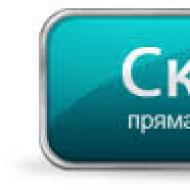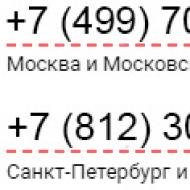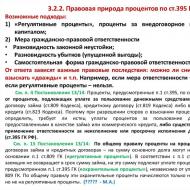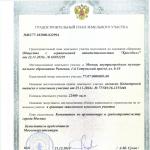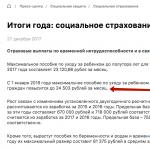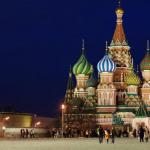
What are investment funds. Investment funds of Russia and the world. The principle of operation of resources to attract investment
Investment fund - a property complex owned by a joint stock company or in a common shared ownership individuals and legal entities. Manages the investment fund management Company in the interests of the investor.
The main task of investment funds is to provide access to the securities market for non-professionals, to attract money from ordinary investors to the economy. At the same time, asset management is carried out by licensed professional market participants.
Investment funds in Russia are created and managed on the basis of Federal law No. 156-ФЗ dated November 29, 2001 "On Investment Funds".
Investment funds are of two types, depending on the form of creation: joint stock and mutual funds.
A joint stock investment fund is an open joint-stock company, the exclusive subject of activity of which is the investment of property. Joint stock investment fund places ordinary shares... That is, in order to become a member of the fund, to invest money in it, you need to buy it securities... And to get out of the participants - sell these shares on the open market, for example, on the stock exchange.
A mutual investment fund (MIF) is not a legal entity. The Law "On Investment Funds" defines it as "a separate property complex consisting of property transferred to trust." In order to become an investor in a mutual fund, you need to buy a share from a management company. Shares are issued in the form of registered securities confirming the investor's ownership of a share in net assets fund. The management company sells and redeems these shares in accordance with the established rules of the fund.
In turn, mutual funds are divided into open, interval and closed.
Investment funds can only be managed by a professional participant in the securities market - a management company that has an appropriate license.
By investment objects, investment funds can be subdivided into stock funds, bond funds, mixed funds. There are also sectoral funds - specializing in areas such as investments in the oil and gas complex, mechanical engineering, etc.
Index funds are mutual funds whose investment portfolio is similar to a stock index. The index is formed by the securities of companies - market leaders, so the risk of such investments is low.
Real estate funds are created, as a rule, in the form of closed-end funds, since the implementation of construction projects can take much longer than the sale of liquid securities.
In addition, modern legislation distinguishes between the so-called funds for qualified investors in a separate group. This category includes hedge funds that have significantly greater legal freedom in the choice of objects for investment up to the use of derivative securities.
So far, they have not received sufficient distribution in our country, but in developed countries there are also venture capital funds whose task is to support companies and promising projects at the initial stage.
The history of investing in funds began in the 19th century, but in a short period of time - already in the second half of the 20th century, investment funds began to compete with the largest banks in the United States in terms of the volume of financial transactions. As part of the article, we will consider what an investment fund is, what types of it exist, what criteria to base on when choosing a fund, how much you can earn, and much more.
The content of the article:
What is an investment fund
Investment fund is an organized financial structure ( company), which is engaged in the professional management of funds of other investors, as well as its own. The scheme of such a fund is very simple:
- An organization (fund) is created with a certain authorized capital from founders;
- Small investors contribute funds that are accumulated in this fund into a single portfolio;
- The portfolio is managed by experienced managers or a management team who analyze the market and execute transactions;
- The profit or loss of the fund is divided among investors in proportion to the invested funds.
Some types of funds may charge a commission or management fee, but not all.
How much can you earn on investment funds
It is impossible to answer this question unequivocally, since there are many different funds, which are divided by markets, types and assets. But in order to understand how much you can earn on investment funds, below we will show different examples of funds and their profitability.
On average, with a reasonable diversification of investments and the absence of adventures, many investors consistently earn 20-30% profit per year on investments in investment funds. But this is only an average.
For example, a mutual investment fund " Balanced", Consisting of mixed investments in Sberbank, has shown an increase of 56.88% over the past 3 years:
If we take into account that this fund includes, in addition to stocks, also bonds and other conservative instruments, then the ratio of risk and return is fully justified.
Types of investment funds
The following key types of investment funds exist today:
- Mutual investment funds - a very popular option for investments, actively promoted by large banks. The entire US economy or 90% of Americans have investments in. This is an analogue of mutual funds, only investors buy shares in the form of shares on the exchange.
- Hedge funds - a well-known, but less common type of funds. It is characterized by weaker regulation by the law and is not available to a wide range of people. For example, in US hedge funds an initial fee for a private person starts at $ 5 million. There are such funds in offshore zones, where the requirements are softer, starting from 100 thousand dollars or less.
- ETF funds - an exchange-traded fund whose shares are traded on the exchange. Usually copies the dynamics of the stock index, or a specific sector.
As for the latter, there are complex solutions that include several ETFs at once. An example of such a fund is Global ETF:

Per last year this fund has earned investors 21.44% profit, which is a decent metric for ETF direction.
In Russia, it is Mutual Investment Funds (UIF) that are most common, they have convenient access, ready-made investment decisions in the largest banks. As a result, the most interesting and useful for an investor is the classification depending on the strategy used and the type of purchased instruments:
- Equity funds - those that buy exclusively shares on the stock exchange.
- Bond funds - they act similarly with bonds.
- Real estate funds - purchase commercial real estate.
- Monetary funds - they act with minimal risk, placing part of the funds on the deposit, and the other part in super-reliable bonds.
- Mixed funds - use different strategies and trading instruments.
The division of funds is not limited to this. They can be divided depending on the sectors of the economy (telecommunications, natural resources, financial, consumer sectors, etc.).
Equity funds
As the name suggests, these funds are focused on buying stocks. Overall on stock exchanges there are many types of stocks, which are subdivided by sectors, countries, but first of all they are divided by the volume of capitalization:
- Small cap companies - turnover of up to $ 500 million, as a rule, these are new and small enterprises that have recently appeared on the stock exchange, they are more risky and adventurous, but they can also bring considerable income;
- Mid-cap companies - turnover of 500 million - 5 billion dollars, there are already more advanced organizations that have managed to gain authority on the market;
- Large cap companies - turnover over 5 billion dollars, and these are the largest companies, giants with well-known brands and maximum reliability.
For example, a small-cap stock fund in Sberbank implies high level risk, for three years they increased by 48,76%:

In general, the high level of risk does not justify such a return, but our task is to illustrate that there are funds that specialize in small companies and their shares on the stock exchange.
Many will be interested in the American market, or in other countries, there are interesting solutions in this direction, namely the AllStocks fund. It includes stocks in companies around the world for maximum diversification.

Fund managers have earned 10.56% over the past year, which is quite justified given the low level of risk and number of instruments.
Bond funds
Working with bonds is characterized by minimal risk and fixed income. This is the key advantage of such funds, but this also leads to an important drawback - the relatively low profitability. There are different classifications, but among most funds, three types are widespread in territorial dependence:
- Bond funds of Russian issuers;
- Eurobond funds;
- Global debt market funds.
For example, the Alfa-Capital bond fund has earned over 15 years since its opening 289,17%:

As you can see, the yield curve for investments in bonds is distinguished by the absence of sharp drawdowns (falls) even during the crisis, when compared with stocks, which lost more than 50-70% in price in 2008. The growth is relatively stable, and this is what attracts the majority of conservative investors to such funds. In terms of capitalization, bond funds are significantly superior to equity funds.
Real estate funds
Another investment direction among the funds that buy commercial real estateand also invest in the construction of facilities. Such funds exist not only among mutual funds, but also as a separate category.
For example, there are REIT funds (from English "Real Estate Investment Trust"), they aim to acquire overseas property... One of these funds is New York Mortgage Trust, its profitability is 15.49% per year, despite the fact that the investment is made in US dollars.
Among ruble-denominated funds, one can cite as an example mutual funds for real estate Below is the fund " Residential Properties 2 ". The unit cost graph itself looks unprofitable, but you need to take into account payments every six months to the unit holders:

Reported payments were as follows:
- for the II half of 2014 47.1 rubles per share;
- for the first half of 2015, 77.5 rubles per share;
- for the II half of 2015 - 76.8 rubles per share;
- for the first half of 2016 85.7 rubles per share;
- for the II half of 2016 60.2 rubles per share;
Thus, the fund pays out about 10% per year, but shares also fall in value. To catch the profitability of such a mutual fund, you need to invest for a long-term - at least 5 years, or sell everything before prices drop.
Monetary funds
As already noted, such funds keep part of the funds in the deposits of the largest banks (usually 50%), the rest - in very reliable bonds. This conservatism is achieved through a minimum income.
As an example, let us take the fund “ Monetary"At Sberbank. There are no profitability charts, they are not required here, because the profit is usually stable. For this fund, the declared income is 6.5% per year, while the yield of a classic deposit is 3-4.5%.
Mixed funds
Mixing implies the use of several strategies related to both bonds and stocks and money markets. In some cases, other assets are added to such funds ( real estate, precious metals, etc.). Most of the mutual funds are mixed.
Here is an example of the structure of one of Alfa-Capital's mixed funds - Balance:

Fund performance is about 15% per year, since its foundation in 2006 it has been 94% ( taking into account the crisis in 2008).
How to choose an investment fund
So, we have considered many types of funds, their features, profitability. Now let's pay attention to how to systematize all this, and how to choose an investment fund that will suit you ideally. To do this, follow the next instruction:
- Define a goal - it is important to understand what you want to get, what kind of profit, its size. If stability is important to you, you are not ready to risk for the sake of huge profits, then you should make a choice in favor of bond funds or even monetary fundsif vice versa, then in favor of equity funds.
- Calculate the amount and terms - at this stage, different investment options often disappear. For example, investing in real estate funds often involves quite large sum for a long time. If you are planning to deposit money for a year or two, then you should pay attention to stocks or bonds.
- Choose a management company- here, it is important what you decided in the previous steps. For a secure investment, it is better to choose large banks and mutual funds (Sberbank, Alfa-Capital, VTB, etc.), there are quite a few good options on bonds, and russian shares... If you want a larger income with increased risk, then you should turn to foreign companies, for example, where there are interesting funds with American stocks or cryptocurrency. Naturally, you only need to invest in reputable organizations, so study the information about the company you will be dealing with.
- Learn all the nuances about the selected funds - it is very important. In the event of a mistake, you will have to withdraw money, pay commissions and lose precious profits in order to invest money in the investment funds of another organization. It is better to study everything well in advance, it will not be superfluous to consult support or from specialists.
- Deposit cash and expect profit - at this stage you need to calm down and wait. Patience is the main criterion for the success of any investment, so do not panic if the fund has a small drawdown in a month. Since you have studied everything, by the end of a year or two, it will still come out in plus.
If you follow the above steps and choose reasonable goals, then you will definitely get a return on your investment.
Advantages and Disadvantages of Investment Funds
Before deciding how much and how to invest in an investment fund, you should also study the positive and negative aspects of funds in general.
Benefits:
- Professional money management - you do not need to make decisions about the purchase of assets, a team of specialists who carefully study the market will do it for you. This is their job, they spend many hours every day. In many cases, their decisions are much more reasonable than those of a sole investor who spends 10 minutes on the market.
- Wide diversification for small amount - by investing in a fund, you get a share in a variety of instruments (stocks, bonds, real estate). With a similar amount, for example, 100,000 rubles, you would not be able to buy that amount of assets.
- Lack of high commission costs for a broker - this is especially true for the American market, where it is quite difficult to cover the commission if you buy shares yourself. Funds have large capital, as a result, they have special conditions when buying assets, in the end, and you do not need to pay any commission.
disadvantages:
- Manager Compensation - It is not uncommon for funds to reward employees with a small percentage of profits. This is usually unimportant, but still present.
- Lack of flexibility - funds usually always buy and cannot legally be short. This does not apply to foreign (offshore) funds and hedge funds, it is more typical of mutual funds. As a result, funds always have a drawdown during a crisis, since they do not sell off assets, as other investors who are not restricted in their rights do.
As you can see, for the most part, investment funds provide great benefits to the investor. Their disadvantages are incomparable and not so significant in comparison with the opportunities they offer.
Conclusion
Investment funds are organizations that professionally manage investors' funds. There are hundreds of different types of funds, some invest only in stocks or sectors of the economy, others work in bonds, real estate, precious metals. Each option differs in terms of risk and potential return.
To correctly choose an investment fund, you need to consistently determine the goals, amount and choose a worthy company. In general, such investments have significant advantages over individual work with investments, since they imply professional management and wide diversification.
If you find an error, please select a piece of text and press Ctrl + Enter.
At the moment, a market economy is developed in Russia. It is based on the principles of entrepreneurship, accessible to everyone, and a variety of forms of private property.
One of the forms economic activity, which is extremely common in countries with a market type of economy, is the investment of own or credit funds in any project for the purpose of making a profit. One of the ways to make an investment is to invest in an investment fund.
Investing is a fairly new type of economic activity for our country. In principle, you can invest money in something without any special financial knowledge, but it is advisable to understand the subject matter and acquire basic knowledge in the economic sphere. They can be obtained through self-study, compiled by famous people, or by enrolling in special courses.
An investment fund is one of the types of institutions that makes deposits by forming a common investment capitalwhere participants' funds are pooled and accumulated.
The most popular in Russia is MN Fund. Key points to distinguish it from other forms:
- collective ownership of investments, while they are accumulated from all participants in the institution;
- the presence of a management company that manages these funds.
Overall volume money the investment institution to be used for investment is formed by private and legal entities... It is clear that not all of them are aces in the specifics of making investments in a particular industry.
This is precisely what a management company is needed for - based on trust management she develops an investment strategy.
This takes into account not only all the risks associated with making deposits (general and private), but also the peculiarities of the area of \u200b\u200bthe economy in which funds will be invested. Based on the analysis carried out, the company is already creating an algorithm for investing the fund's funds.
Main types of investment institutions
In the modern economy, these types of investment funds are distinguished:

The basic types may differ slightly from those in another country. For example, as already mentioned, hedge funds are not common in our country. But at the same time, only we have a CHIF.
Features of investing in equity funds
Fund shareholders can be not only residents Russian Federation, but also investors from other countries, for example, China, Ukraine, Japan, EU countries, etc. Contacts between countries in this regard mean the desire of residents and law firms of other countries to invest in the Russian economy, which indirectly confirms its investment attractiveness.
Whatever country the investor is, he can become an accomplice of the investment fund only if he acquires its shares. Depending on the area of \u200b\u200binvestment, as well as the amount of savings available to the depositor, you need to choose the type of investment fund.
In the last twenty years, investment funds in Russia have changed and expanded. Each of them has its own scheme of work and the level of risk. Highest income offer those funds where the degree of risk is high enough.
What is an investment fund
A mutual investment fund is an association of several investors whose funds a professional manager “invests” in securities to generate income from invested capital. All property of the fund belongs to the shareholders, and the management company only manages in the interests of investors.
The legislation prohibits mutual investment funds in Russia from advertising the expected income; they can only provide potential investors with their previous profitability. On the basis of these data, citizens decide whether to become shareholders or not.
A little about the pair
An investment share is a registered security, it certifies the right of its owner to a part of the fund's property. It can be transferred to another person (as a gift, by inheritance, etc.) or sold.
The share of the shareholder in the mutual fund directly depends on the funds deposited. different for each mutual fund. It can have a cost of several thousand rubles, the upper limit is not delineated.
You can withdraw the money invested in the fund by selling a share. Alternatively - to other shareholders, but usually the management company is engaged in its implementation.

Pros and cons of mutual funds
The advantages of investment funds in Russia are the following:
- The foundation is managed by professionals. Managers in charge of management are certified by the Federal Securities Market Commission.
- Minimizing risk. Competent managers make every effort to diversify investments and reduce the dependence of the investment portfolio on declining securities prices and other risks.
- Reliable investment protection. It includes licensing of the company, certification of specialists, control over the activities of the fund.
- The investment conditions are very convenient. The shareholder can enter and exit the fund at any time.
- Preferential taxation system. Income is not subject to income tax.
- Regularly providing investors with up-to-date information about the fund.
It is necessary to mention the disadvantages of this kind of investment:
- Mutual investment funds will bring income in the medium or long term not earlier than in a year.
- The services of an investment company are not free, it charges a commission for its work, regardless of whether the investor received a profit or "left" at a loss.
- Each investor can both receive income from the invested funds, and "go to zero" without earning anything.

Fund types
Investment funds in Russia are diverse. For convenience, we will present the differences between funds of various types in the form of a table.
Criterion | Fund types | Description |
By the degree of openness | Closed | Shares are issued and canceled during the formation of the mutual fund. Units can be redeemed after the end of the period of operation of the mutual fund. Such funds are most often formed for a specific project. |
Open | Shares are issued and redeemed every working day. The assets of an open-ended mutual fund are securities with high liquidity that have exchange quotations. |
|
Interval | On specific dates that are specified in the rules of the mutual fund (twice or three times a year for 2 weeks). Fund assets are usually low liquidity securities. |
|
In the direction of investments | Money market funds | Funds are invested in bills of exchange, certificates of deposit and other short-term deposits. |
Bond funds | Investments in bonds generate monthly returns. The most reliable of the bond funds are government bonds, since securities are issued by the government. | |
Equity funds | Joint-stock investment funds in Russia are very popular due to their high profitability, but the value of the assets of such mutual funds fluctuates greatly depending on the situation on the securities market. | |
Mixed investment funds | Funds are invested in both stocks and bonds, thanks to which the shareholders receive both a fixed income from bonds and a good return with a high degree of risk (from stocks). | |
Real estate funds | Profit is generated by renting or resale property. | |
Funds of funds | Funds are invested in other funds, thus ensuring high reliability of the invested funds. |
|
Foundations sector | Funds are invested in companies operating in the same industry. |
|
Foreign Equity Funds | The money can be invested in companies located in various parts of the world. |
Other types of funds
In addition to those presented in the table, there are other types of mutual funds:
- Pension. They invest in both bonds and stocks. The duration of the investment period depends on the age of the investor. This type is suitable for those who wish to receive income, the rate of which does not exceed 10% per year, after retirement.
- Funds invest only in those industries where you can get high profits with minimal risk, which is why such funds are also called guaranteed. Most often, the safety of investments is ensured by large foreign banks, but only for long-term investment (5-15 years).
- Social responsibility funds invest in organizations that improve the quality of life of citizens (for example, health care).

Yield rating
Potential shareholders must have information about the reliability of investment funds in Russia. The yield rating is as follows:
- Funds organized by Sberbank are in the lead. They are reliable, but not highly profitable. Maximum income is 25% per annum.
- The second place belongs to mutual funds of the German Raiffeisen group. The company's profitability is average (about 40% per annum).
- The third position belongs to the Investment Trust Company. 50-60% profitability and more than 10 years of work make it very popular.
These are only the most popular investment funds and companies in Russia, which are most widespread.

They have been operating in Russia since the mid-1990s. During this time, they managed to win the trust of citizens as a good way to invest free finances to generate additional income. However, before making a final decision on investing in a particular fund, you must carefully study the information about it.
Not everyone who wants to invest in various investment projects, boasts unique knowledge of how to invest profitably and safely. Therefore, in the global financial industry, various, or companies, as some experts call them, have appeared.
it attractive projects, whose responsibility includes the successful various investors, in various financial projects that should be profitable.
Operating procedure of investment funds
The principle of operation, these financial companies is as follows. A person who wants to become an investor, but does not know how to properly invest his money in various financial projects, applies to such a fund. If he is satisfied with all offers of cooperation, he buys shares or certificates of an investment company, forming its financial portfolio.
The managers of such funds, having accumulated cash, the so-called, invest them in various projects, ranging from the purchase of shares of various companies, ending with bank deposits (,), making a profit from this. The resulting profit is distributed among all investors, depending on who invested how much money.
 The investment portfolio consists of borrowed funds and the fund's own money. The process of forming a price for one share, or a certificate of such a company, is very interesting.
The investment portfolio consists of borrowed funds and the fund's own money. The process of forming a price for one share, or a certificate of such a company, is very interesting.
Every day the investing manager makes a calculation of the profit received and the number of issued shares or certificates. After that, according to a certain formula, it displays the cost for the following buyers (investors).
This is how various investment funds work. IN modern world, there are already a sufficient number of such financial institutionswhich are very popular with investors.
Pros and cons of investing capital in investment funds
Talking about various positives, investing your money in various investment funds, you need to dwell on such points.
 First of all, it should be noted that they are ideal for those people who have never been involved in professional investment, but want to receive. They do not need to think and analyze which stocks, or which a precious metal, will cost more, rising in price.
First of all, it should be noted that they are ideal for those people who have never been involved in professional investment, but want to receive. They do not need to think and analyze which stocks, or which a precious metal, will cost more, rising in price.
For them, it will be done by professionals who have been doing this for more than one year, and are familiar with the situation in this market. In addition, almost every investment fund involved in attracting financial resources from various investors, also has investment portfolio and the funds of their co-founders (owners), who are not interested in losing their financial resources, therefore they strictly control the work of their managers, and orient the latter towards achieving a positive result. Buying shares or certificates insures the investor against investing his money in various pyramids, or fraudulent schemes, so the option of completely losing his funds from fraudulent activities is excluded.
Having told about the various advantages of modern investment funds, it is imperative to mention, and about some of the negative aspects of such funds. The only thing that can be mentioned is that any investment activity carries risks, partial or complete loss of invested funds.
Unfortunately, modern investment funds are also not immune from this. Therefore, if an investor becomes aware that such a company has not made a successful investment of funds, and begins to go into the red, then it is best to sell the shares or bonds of this fund on hand and move their capital to a more profitable project.
Summing up, what is an investment fund, we can say the following. This is a very interesting way of making money for those people who have decided to engage in investing activity, but do not know how to do it correctly.
Of course, there is a certain risk associated with the loss of their capital, as a result of incorrect investment activities fund, but the purchased shares or bonds can always be sold by withdrawing your capital, which can be transferred to another investment company. In general, there are much more positive aspects of such an investment than negative ones, so they are trustworthy.

